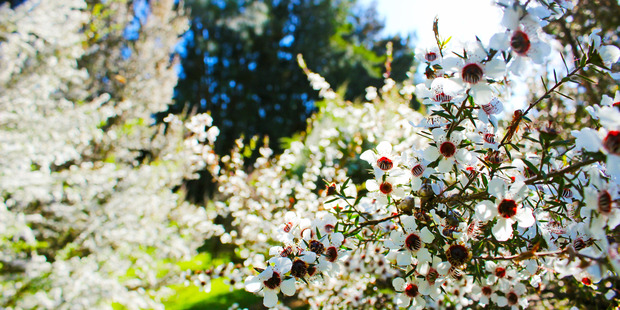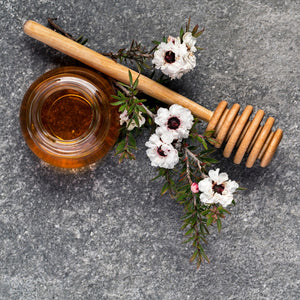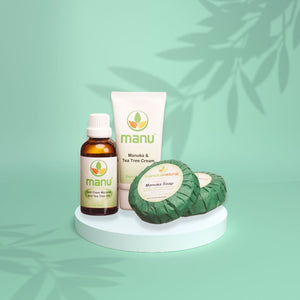Exploring Manuka Honey's Impact on Bacterial Challenges
Manuka honey’s potential to defeat a scary superbug may give it another competitive advantage, but all may be fruitless if our bee population continues to decline.

The manuka tree, a bushy shrub with white flowers, is key to one of our highest-priced exports - manuka honey.
Fetching $1000 a kilogram for medical grade and , and significant premiums for high Unique Manuka Factor (UMF) and methylglyoxal (MGO)-rated manuka honey, this natural resource is giving our export industry a competitive advantage.
The healing effects of honey come from several components which contribute towards its antimicrobial activity, including its high sugar content, low water activity, low pH, and the formation of hydrogen peroxide. High-value manuka honey differs from standard honey in that it also contains high levels of the organic antimicrobial compound methylglyoxal.
In the era of superbug MRSA (Methicillin-resistant Staphylococcus aureus) - a bacteria which has become resistant to a number of widely used antibiotics - medicinal honey has been suggested as a natural alternative treatment.
Research laboratories, seeking to create and understand antibiotic resistance in bacteria, have conducted tests on four different wound-infecting species of bacteria and have so far been unable to develop mutants resistant to MGO. The agent found in manuka honey is potentially able to defeat the scary superbug.
Further research shows benefits of MGO treatment for patients with slow, or non-healing wounds - diabetic ulcers for instance - where the long time periods involved increase the chance of developing antibiotic resistance. Although the studies have been small to date, initial results have shown the addition of manuka honey to wound dressings improved healing. New Zealand is in an exciting position to benefit as this research continues.
Honey, as we all know, is made by bees. Sadly, the majority of our wild honey bees have been lost to a parasite called the varroa mite. This mite attaches to the body of the bee and sucks its blood (known as haemolymph), transmitting diseases and leaving open wounds on the bee.
As a result, most of the bees now living in New Zealand are cultivated bees. The varroa mite has started to mutate, becoming less sensitive to the chemical miticides being used to protect our bees. The potential loss of even more bees as a result is concerning.
The impact of this loss was highlighted in research released this week by Lincoln University Professor Stephen Wratten, who estimates New Zealand agriculture stands to lose between $295 and $728 million each year if our local honeybee population continues its current decline.
By monitoring bees' interaction with crops in the Canterbury Plains, then analysing the effects of reducing the bees' access to the plants, Wratten concluded that if our pollinating bees are to survive, we must introduce appropriate diversity back into our farmed crops, globally.
If the plight of the bee is left unchecked, our valuable manuka honey industry will be just one of the casualties. Bee-assisted pollination is a critical ecosystem service, with many important agricultural products depending on it: kiwifruit, apples, avocados, even our livestock production is affected. Nitrogen excreted by livestock is "fixed" (trapped) within regenerating clover. Clover pollination is enabled by bees and helps prevent agriculturally produced nitrogen run-off.
Globally, a quarter of the world's 250 bumblebee species are thought to be facing some degree of extinction risk. For those of us who don't want a hive of our own, good bee nutrition is a great way to prevent colonies from dying. Healthy, nourished bees cope better against threats such as pests, pathogens and pesticides. Growing brightly coloured plants with ample amounts of pollen and nectar, such as borage, lavender and rosemary, will help to strengthen one of our smallest, most important, buzzing assets.


